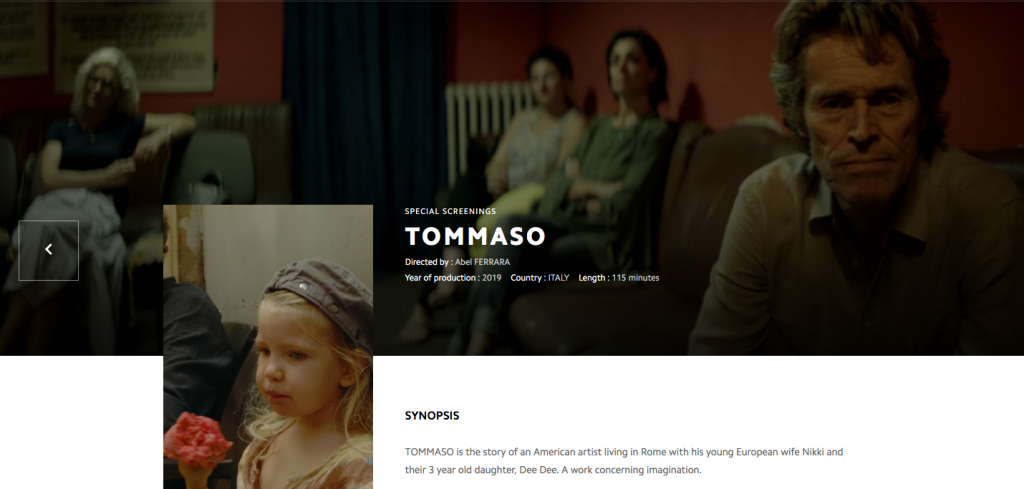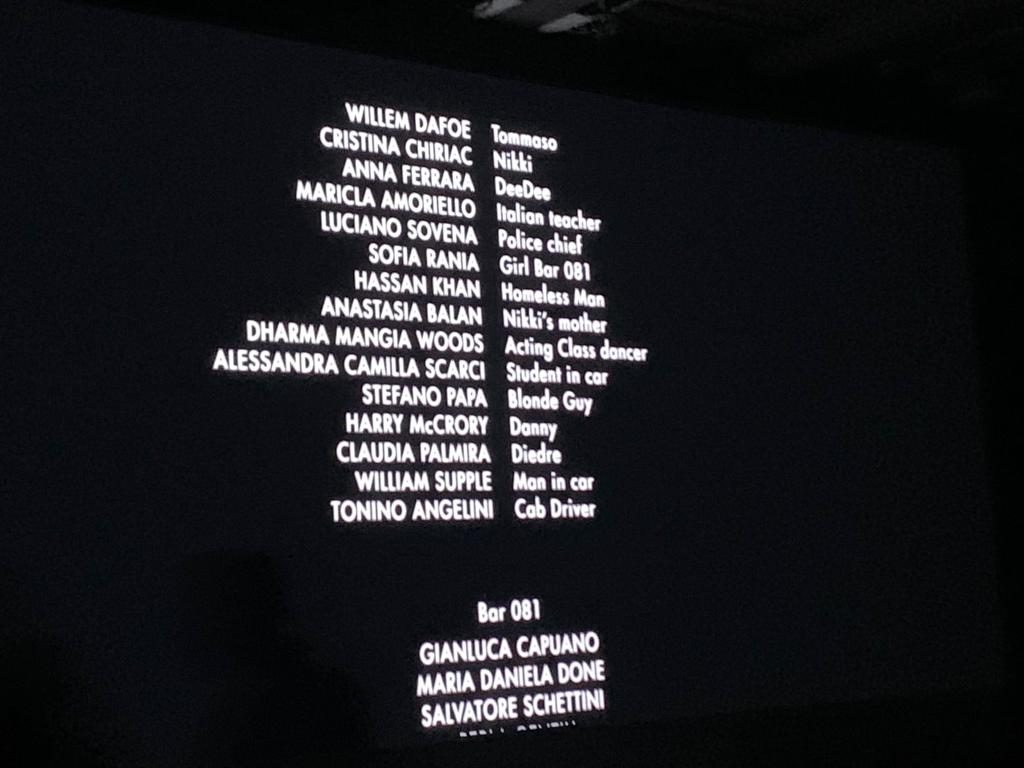Grit and beauty | Abel Ferrara

Appreciating the magic of the place you inhabit – as well as its grit – is not often elevated to the level of filmmaking. There is no artist I know who captures the intensely street side of his town more accurately than Abel Ferrara, filmmaker, friend and fellow New Yorker in Rome.
Lifting the veil on the darker side of the human experience, Ferrara crafts exquisite filmic compositions, whose scenes at times rattle and push the limits of what’s comfortable or even entertaining to watch. The raw truth expressed in street photography style cinematography give his works a remarkable feeling – one that defines the artist’s unmistakable imprint.
Ferrara’s recent films center around the Rome ambience: Piazza Vittorio and Pasolini; followed by a film I’m very excited to share about: Tommaso. I was honored to have a line in this film (as a character called Diedre) – and amazed to blurrily appear in film’s major artwork, seated behind the star actor, Willem Dafoe.

A longtime collaborator and friend of Ferrara’s, the actor as Tommaso depicts an expat artist living in Rome, struggling to make sense of his life and love of his young wife after becoming a father. The passionately personal film, which even includes his wife and daughter, was shot on location around the City and premiered at the 2019 Cannes Film Festival. The storyline melds truth and fiction, giving emotional texture to the daily shifts – light and dark – in the protagonist’s personal and professional worlds, set in a foreign city. What becomes truly foreign to Tommaso is that which is domestic, his young wife and baby daughter – and by contrast, the corners of his adopted neighborhood and new found friends become “home”. Captured with a simply gorgeous attention to color, light and chiarascuro, the film delves into the artist’s imagination, the inner enclave of his mind pitted almost violently against the harsh mundanity of family life.


Besides Tommaso, Ferrara will be releasing more films this year. On the heels of his MOMA retrospective, which captures many years of his work, including pieces that were previously unseen in the U.S. due to rating laws – his new works are greatly anticipated.
What has made Ferrara’s career so fascinating is his ability to unabashedly confront the viewer with the violent edges of our humanity, breaking with filmmaking conventions. Through the street lens of his storytelling, he leads viewers on a non-linear journey, often “unlit”, that ultimately reveals our shadows. Turns out, they can be kind of beautiful.
Bravo Abel!


